Yes, personalized email marketing makes a massive impact on your email marketing success.
In this article, I’ll teach you how to personalize your email marketing for the biggest response.
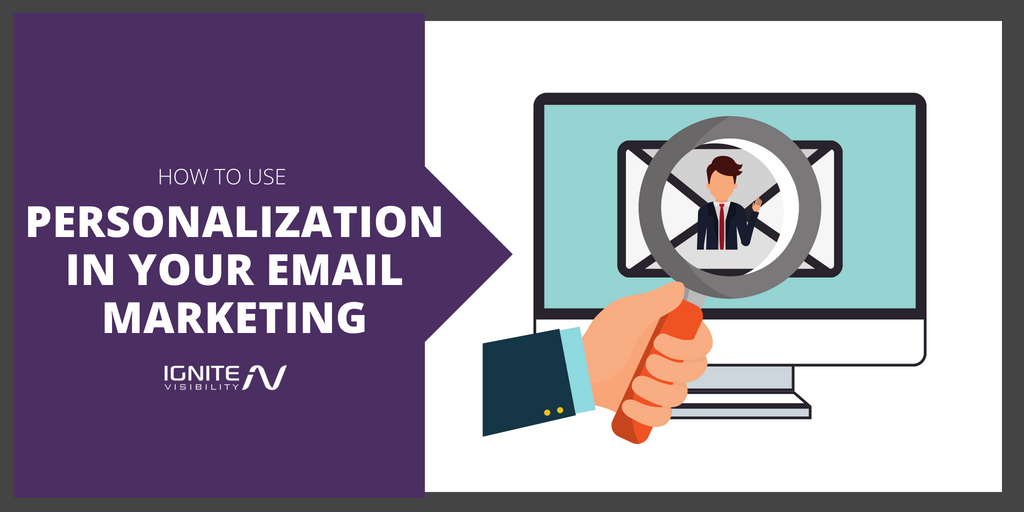
Personalized Email Marketing
What is Personalized Email Marketing?
The short version: personalized email marketing is a way to tailor your emails to individual users or groups of groups of users.
The slightly longer version: personalized email marketing uses the subscriber data a business has collected to tailor content to their users based on demographics, interests, industries, etc.
It’s highly effective, and marketers have found a 760% increase in email revenue from segmented campaigns.
This technique is able to return such outstanding results because it helps marketers send more relevant content to their users.
And, let’s face it, it makes users feel better. They feel more of a connection and more like they’re being catered to when presented with a personal touch, rather than a generic, batch email.
In fact, 80% of consumers are more likely to do business with a company if it offers a personalized experience.
Often times, that experience starts with email.
Why Aren’t More Marketers Using Personalized Email Marketing?
No one’s denying the impact of personalized email marketing.
In fact, according to a study by The Aberdeen Group, 96% of organizations believe that email personalization can improve email marketing performance.
But few are getting it exactly right. According to Evergage, The majority (55%) of marketers feel that the industry is not currently getting personalization right, and only 30% are very or extremely satisfied with their current personalization efforts.
And take a look at this:
During the holiday season in 2015, 80% of marketers placed promotions within their top three email marketing strategies, but only 56% of marketers listed segmentation-based targeting as a top tactic, and only 21% were leveraging real-time personalization or A/B testing.
Granted, they’ve had a few years to improve their targeting tactics, but based on the facts and stats, we can come to the conclusion that most marketers want to use personalization in their email marketing. They just don’t know how.
How to Get Started With Personalized Email Marketing
-
Create a Form with the Right Fields
Job #1: Get some subscribers.
After all, you can’t send out personalized emails with no one to send them to.
The problem, of course, is getting them to sign up in the first place.
The most common plan of action is to include a sign-up form, usually in a pop-up or designated sidebar of your website. And while these may seem outdated, don’t worry, they’re still one of your best bets to grow your email list.
And if your strategy is to personalize your emails as much as possible, it needs to start with that form.
This is the stage where you collect the right information regarding your audience. Include the obvious fields: name, gender, etc.
After that, the fields you select will have to do with the nature of your industry and emails. If you’re in the B2B space, you’ll likely include questions about each subscriber’s industry or position.
If you’re operating a B2C, you’ll instead ask about particular interests.
Take a look at how the New York Times does it.
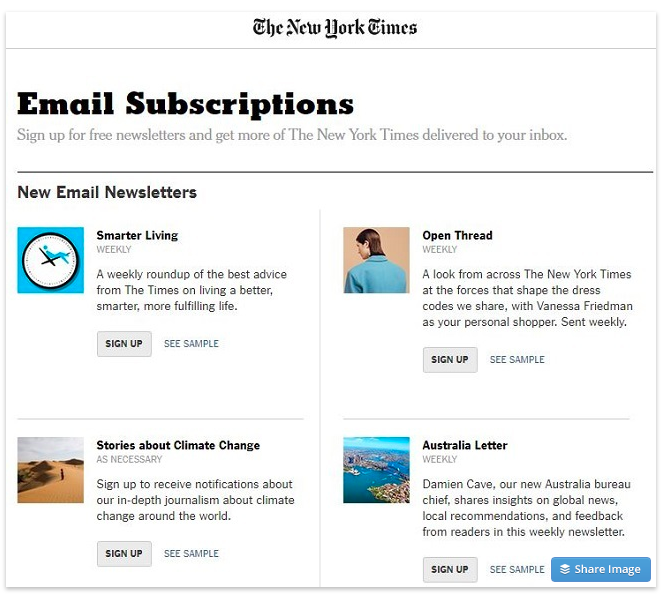
The New York Times personalized email marketing
They ask users to select a specific type of email they’d like to receive, and in the process, gain insight into the kinds of interests each user has. This will help the Times further segment its audience based solely on the kind of email they choose to receive.
Now, it’s a generally accepted best practice that the fewer form fields you include, the more submissions you’ll get.
But just because its labeled a best practice doesn’t mean it’s necessarily best for you.
In the case of B2Bs especially, sometimes more fields work more effectively to get you the qualified leads you’re looking for.
Think about it: if someone really wants your ebook, webinar, or access to more information about your product, they’ll take the time to fill out the form. And if they do, you’ll know these are the kinds of leads you’re looking for.

Hubspot’s personalized email marketing form
Again, you may be losing some quantity in exchange for quality. And to really know what works best for your biz, you’ll need to run an A/B test with different form field variations.
When in doubt, you can always get creative with live chat submissions, lead ads, etc.
-
Segment Your Email Lists for Personalized Email Marketing
Next step: grouping your subscribers into segments to better tailor their messaging.
List segmentation is one of the greatest tools marketers have when it comes to crafting personalized emails, and studies show that segmented email campaigns get 14.31% more opens and 100.95% more clicks than non-segmented campaigns.
Again, the ways in which you segment will largely depend on the overall goals of your email campaign. It can be as simple as targeting by gender, or as complex as using transactional data like past purchases to target by buyer behavior.
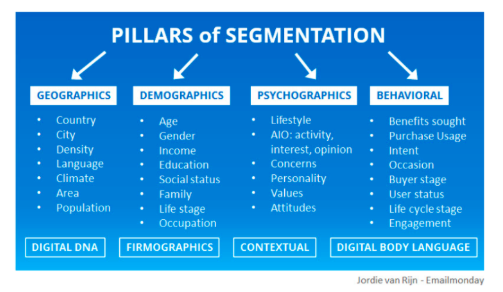
Personalized email marketing: segmentation
Here are a few segmentation styles to consider:
- Email engagement – create different campaigns for different users based on activity level; for example, you could launch a strategy to target inactive members
- Past purchases – tailor your product offerings in your email,
- Website behavior – segment based on specific pages users have visited or other activity on your site
- Location
- Age, gender
- Industry
- Interests
-
Choose Your Email Software
Here’s the good news: you don’t have to do all of this yourself.
A good email software will be able to help you build forms for your website, store the data, and segment your audience based on the criteria you choose.
I’m personally a big fan of MailChimp for smaller businesses. It covers all the basics you’ll need to properly personalize your emails, and its price point is hard to beat.
If you’re a bigger business with the need for a more robust platform, Hubspot may be your best bet.
It comes with a full set of features dedicated to personalization.
One of those is a personalization token, which allows you to insert information from your contact records.
The other is the newer Smart Content, which helps you tailor content based on where they are in the buying process, when they’ve visited your site, or any other information you’re able to collect on your audience.
Again, most newer platforms will have some sort of segmentation and personalization tools built in, so make sure you do research to ensure the features available fit the goals of your campaign.
4 Personalized Email Marketing Strategies
With your initial bases covered, the next step in the process is deciding exactly how you’d like to personalize your email marketing.
-
Personalized Email Marketing: The Copy
When you see an old friend pass by, you expect them to address you by name, right?
Right.
Because it’s friendlier, it’s more personal, and it shows that you’re not just another stranger on the street.
You’re someone they have a relationship with.
That’s exactly the scenario you want your emails to mimic. Subscribers don’t want to see generic “heys” and “hi theres;” they want to be addressed by name.
They like the recognition, and it’s why emails with personalized subject lines are 26% more likely to be opened.
Absolutely do this in your subject line, and even go the extra mile and incorporate your subscribers names throughout the text of your email.
How to do it:
The good news about this tactic (besides its effectiveness) is that it’s a pretty easy one to get right.
The “name” field is a staple in most internet forms. Users expect to see them, and are unlikely to be put off by that field alone.
So, collect all your subscriber’s names in your forms and enter them into your favorite email software.
For example, in Mailchimp you would use a merge tag to include names in your emails. To do so, just insert this tag into your email template in the spot where you’d like the name to appear: *|FNAME|*.
It’s not just applicable to first names, either. Experiment with including last names, email addresses, etc.

Personalized email marketing:
-
Your Offers and Recommendations
Personalization goes way beyond just a name.
To truly tailor your email, you want everything to speak directly to the person reading it.
One way to do that is to tailor any offers you include based on interests, location, gender, etc.
For example, Chewy brand uses past purchase behavior to send relevant product recommendations and reminders to subscribers.
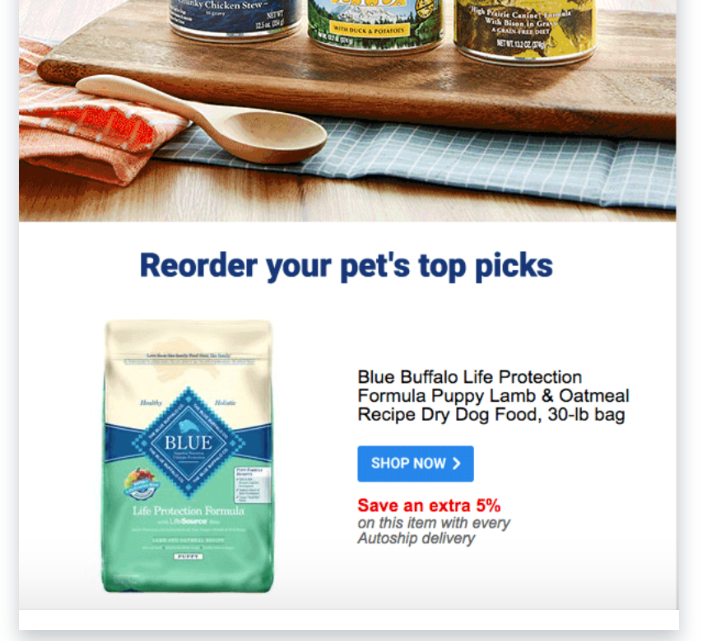
Chewy’s personalized email marketing
Of course, you can also personalize your offers based on other factors like location. If your business operated based on location like Uber, you can use that information to send targeted promos and exclusive offers.
They also use personalized email marketing to send discounts to individual customers.
How to do it:
This is a particularly great option for anyone operating an e-commerce store.
To use it, most email software will integrate with sites like Shopify, WooCommerce, Magento, etc., to allow the software access to purchase information about your customers.
From there, the software analyzes each customer’s purchase history in order to send recommendations and purchase follow-ups.
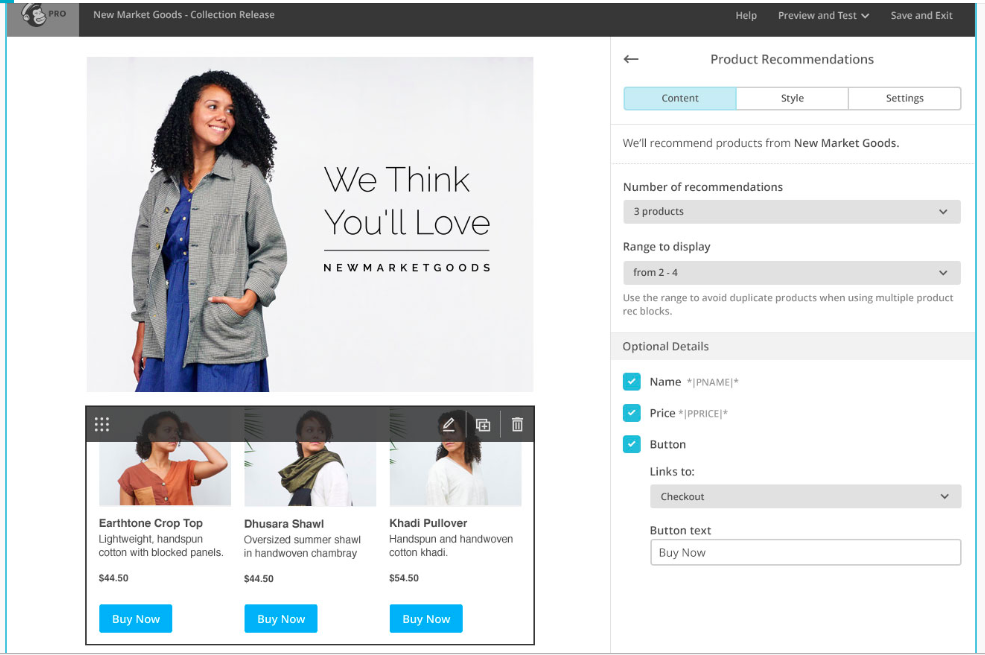
Personalized email marketing: product recommendations
-
Personalized Email Marketing: Behavior Triggered Emails
Ever wish you could communicate with each user in real-time?
Good news: you can.
Behavior-triggered emails are marketers’ way of responding quickly and appropriately to how users are interacting with their website.
For example, if someone hasn’t logged into their Dropbox account for a month, the higher-ups might want to send them a little reminder in hopes of enticing them back.
They can do that with personalized email marketing.
It’s a process completed through triggered emails. You decide which event triggers the email – a certain period of inactivity, a new subscriber signs up, a customer completes a purchase, etc. – and your software will automatically send the correlating email (or set of emails).
This will help you personalize based on certain behaviors, and help the customer feel like you can anticipate and follow up on their needs.
How to do it:
We’re going back to MailChimp for this one.
To set up triggered emails using the software, you’ll need to set up an automation sequence.
You’ll see that they have pre-loaded triggers, such as welcoming new subscribers or sending a happy birthday note, or you can create a custom trigger.
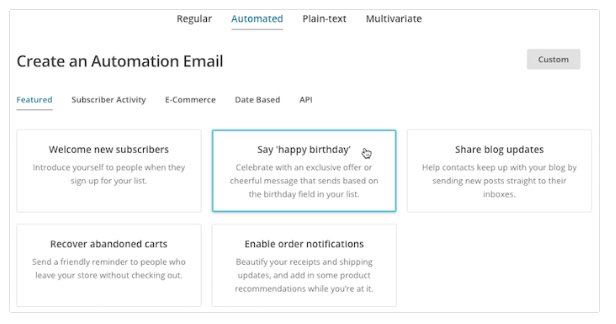
Personalized email marketing in MailChimp
Then, you’ll design your email and use merge tags to include any personal data like names in the text.
Once confirmed, MailChimp will be set up to send the email based on the behavior you specified and will pull the necessary information from the customer data stored in each automation list.
-
Personalized Email Marketing: Personalize Your Images
These days, images speak louder than words.
But personalized images speak the loudest.
One of the more common ways you’ll see this is through text overlayed on the image – a personalized birthday message or location offer, for example.
But using location data, you can also customize the images themselves to only show certain shots to people in specific areas.
Virgin Airlines did this by creating different emails for subscribers living in the US, UK, and Australia. That way, it could show the most relevant images to subscribers living in vastly different locations.
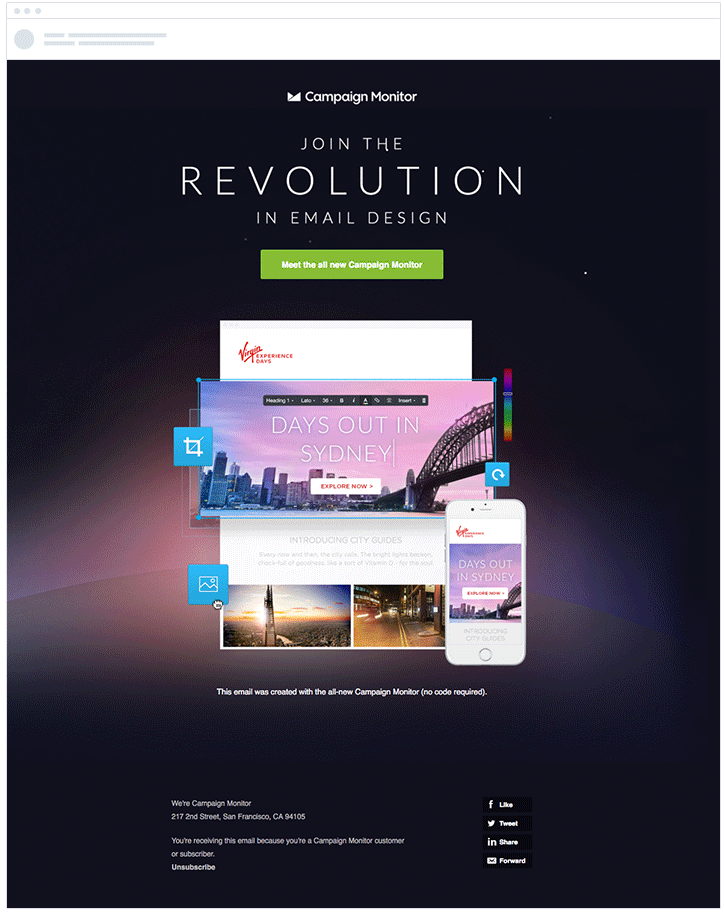
Virgin Airlines customized images
Your image choices aren’t limited to location. You can show different images based on gender, indicated interests, active user status, etc.
How to do it:
This one will depend on how you want to segment your list.
If you’re segmenting by location, for example, you’ll create a list in your software dedicated to that location and include the specific images to be used.
So, Virgin Airlines likely created three separate segments: one for the US, the UK, and Australia.
From there, they designed separate templates for each, using messaging and images relevant to that location.
For more on segmenting types and implementation, click here.
Personalized Email Marketing Conclusion
Personalized email marketing isn’t really an option anymore.
Standard, batch emails simply don’t cut it.
But the reality is that with a proper plan – including your campaign goals and segmentation types – and a modern email software, personalization doesn’t have to be that complicated.